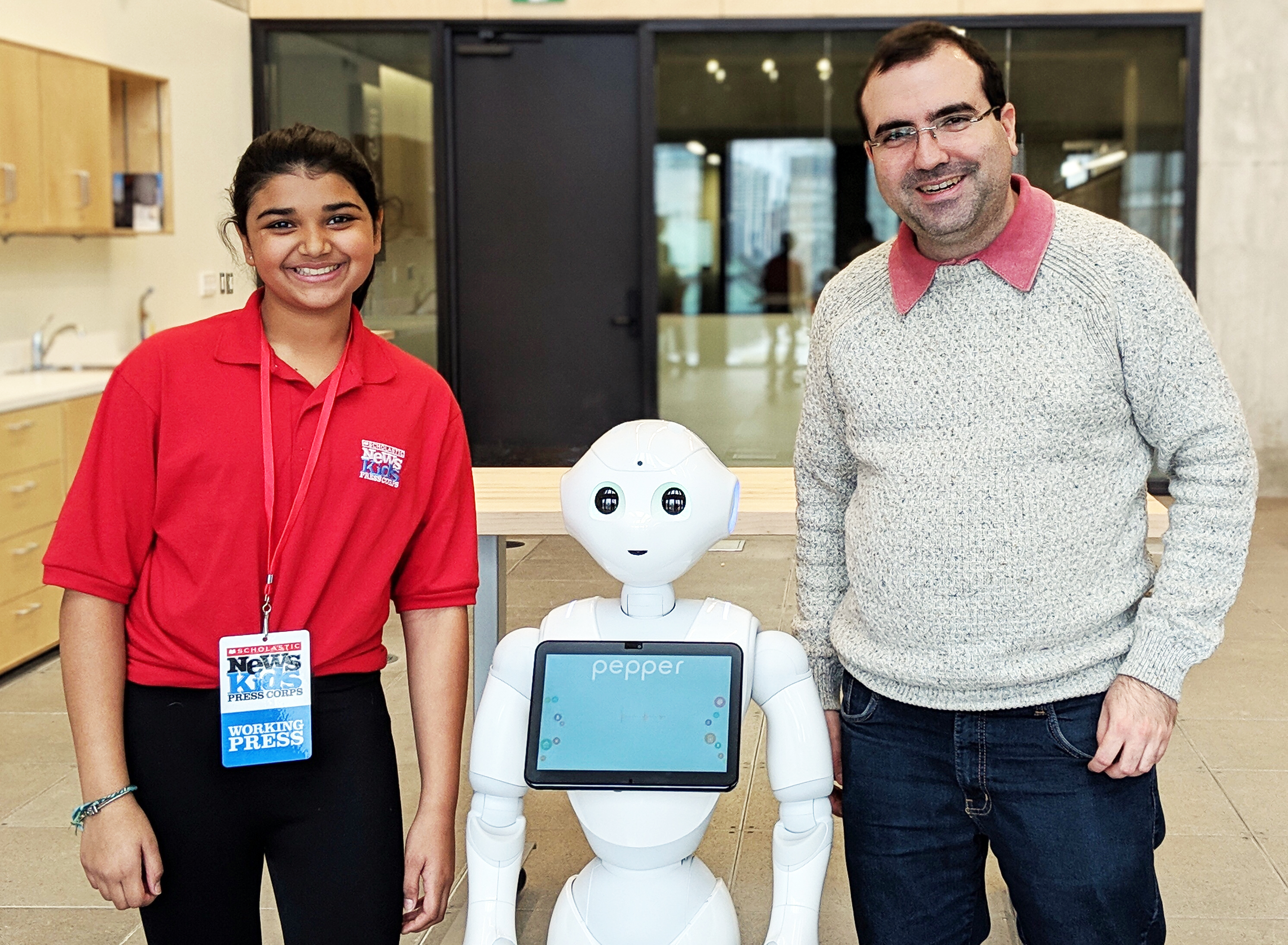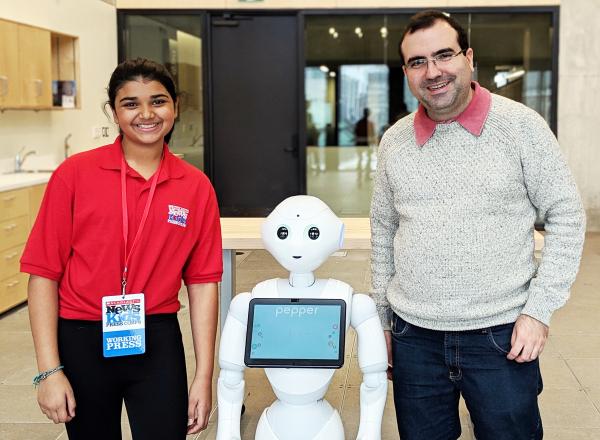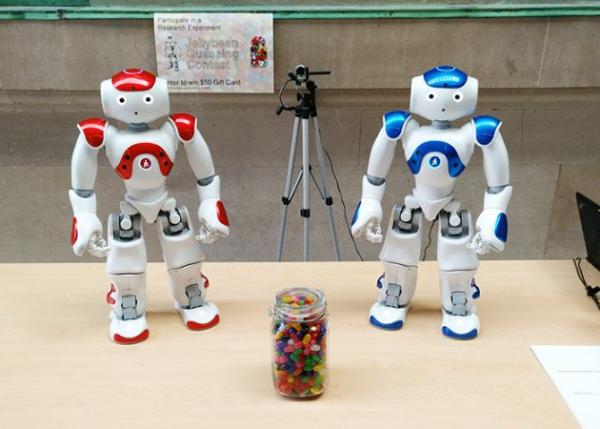KID REPORTERS’ NOTEBOOK
An Eye on AI


Nikita with Silas Alves, a post-doctoral fellow at the University of Toronto, and Pepper the robot
When you’re drawing a picture, writing a story, or baking a cake, imagination is essential. That’s also true for artificial intelligence (AI)—machines that imitate such human traits as problem solving and learning.
I recently spoke with researcher Silas Alves, a post-doctoral fellow at the ASB Lab at the University of Toronto. ASB stands for Autonomous Systems and Biomechatronics.
“The most surprising thing about AI,” Alves said, “is that it’s not intelligent at all.” Using an algorithm, an AI system simply learns what an object is by comparing it to previous images of that object.
This learning process, known as perception, is used to develop machines that can recognize images, understand speech, and detect someone’s tone of voice. The next frontier is creating a machine that can detect emotions.
The ASB Lab is developing machines and robots that are able to help people doing dangerous or stressful tasks. Examples include devices for search and rescue and sensor agents. The lab is also creating robots that can assist senior citizens.

Leia, left, and Luke were developed by the ASB Lab at the University of Toronto to assist elderly people.
SOLVING REAL-WORLD PROBLEMS
Across the globe, AI is being used more and more to help people better perform their jobs. For example, IBM’s Watson, a sophisticated computer system, can help doctors detect cancer in patients. IBM’s software gives doctors an analysis of images taken of the body. The doctors can then decide on the best treatment options.
The ASB Lab is involved in a project called AGE-WELL, which is designed to help elderly people maintain their independence.
“Canada, just like other countries, has a population that’s growing old,” Alves said. By 2050, he pointed out, the proportion of people over the age of 65 will be higher than the rest of the adult population.
As part of the project, the university’s engineers have developed an advanced robot named Brian. Brian can help older people by prompting them to remember to eat or take their medications.
Another robot acts as a personal assistant, helping seniors select what clothes they’ll wear for the day. It’s able to make such suggestions because it has access to local weather reports, the individual’s online calendar, and the items of clothing that are available.
AI meets several needs, Alves said. “You’re only limited by your imagination.” But he cautioned that one of the challenges of AI is the fact that it replicates human biases and prejudices. AI could also be used to do harm. To address these dangers, researchers are working on systems that ensure ethical actions.
As the late physicist Stephen Hawking said, “AI is likely to be either the best or worst thing to happen to humanity.”
